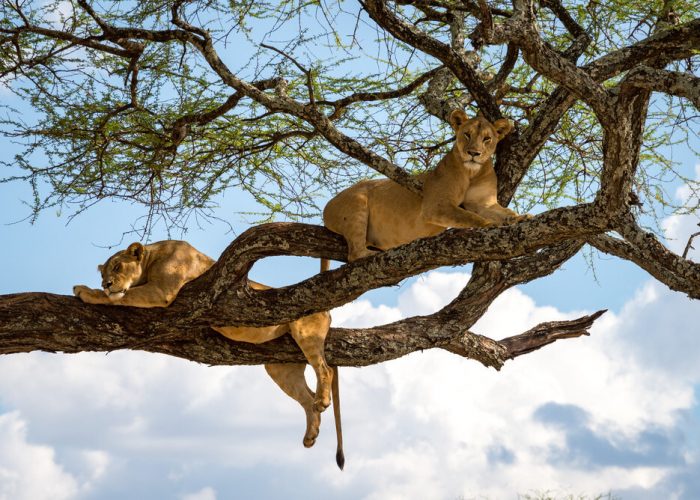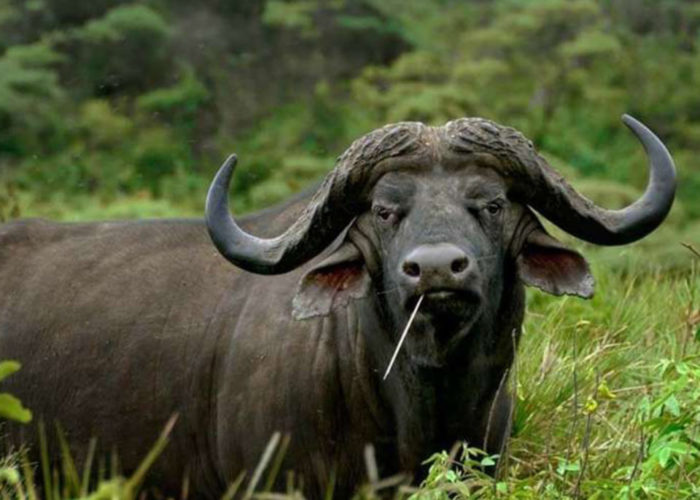Lake Manyara National Park
5 Star rated safari company in Moshi, Tanzania on TripAdvisor
Lake Manyara National Park
Only one third of this national park is land, the rest is swamp or water. The area has a size of 325km² and is about a 2 hour drive from Arusha. On the way from Arusha to Manyara you will not get bored. You will see the beautiful Maasai walking from village to village. You will also see some of the typical Maasai villages with little houses and cattle.
Not only will you find the Baobab tree in Manyara but you will also see the Sausage trees. The name of this tree refers to its long sausage-like fruit. Get out of the vehicle and stretch your legs at the hippo-pool. The pool is not only home of the large hippo’s, but also many water birds are to be seen here.
This park is famous for its tree climbing lions. There are various explanations about why these lions climb in trees. Some say the lions don’t want to be bothered by elephants and buffalos. Others say that the soil at this area is wet, which makes the claws of the lions soft.
In Tanzania’s Lake Manyara National Park, our Tanzania Safari Packages give the ideal introduction to the country’s birds. There are over 400 species reported, and even a first-time visitor to Africa might fairly expect to see 100 of them in a single day. Thousands of pink-hued flamingos on their annual migration, as well as other huge water birds like pelicans, cormorants, and storks, are among the highlights.
Are you looking for more information or a helpful guide to help you plan your trip? Materuni Tours is the company to contact.
About Lake Manyara National Park
Size: 330 sq km (127 sq miles), of which up to 200 sq km (77 sq miles) is lake when water levels are high.
Location: In northern Tanzania. The entrance gate lies 1.5 hours (126km/80 miles) west of Arusha along a newly surfaced road, close to the ethnically diverse market town of Mto wa Mbu.
Getting There
By road, charter or scheduled flight from Arusha, en route to Serengeti and Ngorongoro Crater.
What To Do?
Game drives, night game drives, canoeing when the water levels is sufficiently high.
Cultural tours, picnicking, bush lunch/dinner, mountain bike tours, abseiling and forest walks on the escarpment outside the park.
When To Go?
Dry season (July-October) for large mammals;
Wet season (November-June) for bird watching, the waterfalls and canoeing








